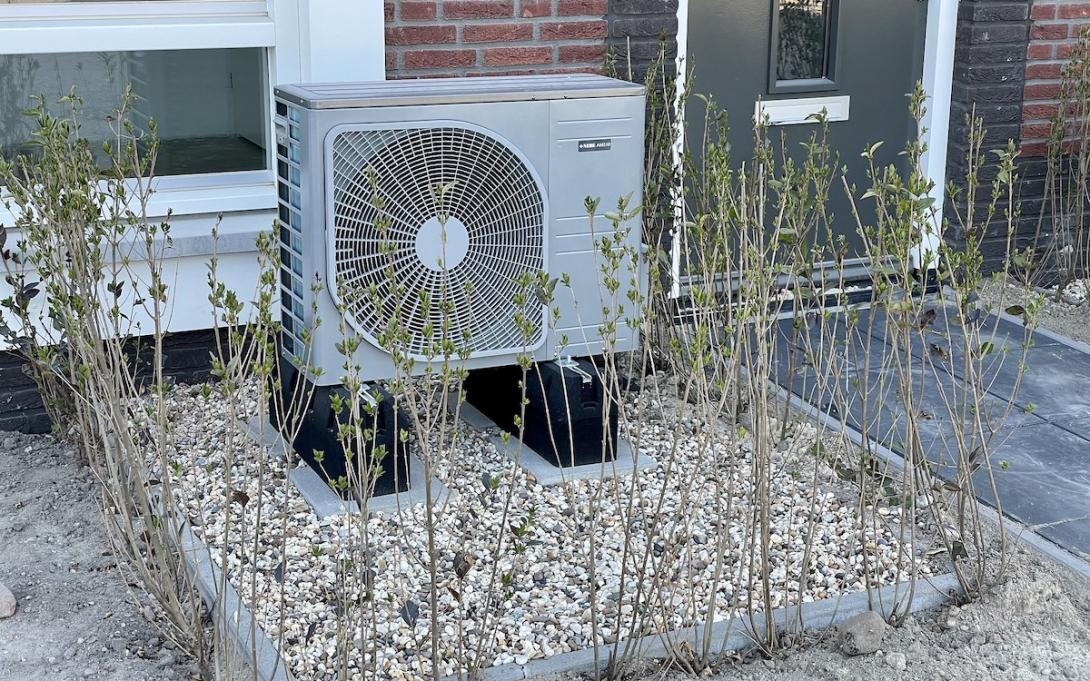
After the 2021 heat dome left more than 100 dead in Oregon, state Democrats committed millions of dollars to help residents and landlords install heat pumps, the climate-friendly alternative to air conditioners and furnaces.
Then-Gov. Kate Brown signed Senate Bill 1536 into law in March 2022. The law created $27 million in financial assistance and grants to cover the cost of a heat pump. Heat pumps cool or warm spaces by transferring air in and out of homes. These electric appliances cut power bills over their lifetimes and can play a central part in climate goals by replacing air conditioners, which are inefficient, and fossil fuel-powered systems like gas furnaces.
Heat pumps cost anywhere from a few thousand dollars to more than $20,000, depending on factors like home size and whether residents can access financial assistance programs like Oregon’s or the new federal tax breaks that are now in effect, according to Carbon Switch, which studies electrification costs.
Oregon’s heat pump programs are still being set up, but when they go live, landlords will be eligible for a 60% rebate on the cost of a heat pump. Grants doled out by groups like community-based organizations, environmental justice groups and tribal governments could cover the full cost.
Additionally, the law put $5 million toward emergency deliveries of free air conditioners to vulnerable residents and protected renters from fines or eviction for using air conditioning units during a heat wave.
Amy Bacher, a spokesperson for the Oregon Health Authority, said the agency spent $4.6 million on almost 8,000 air conditioners. Agencies have delivered almost 3,700 units so far.
“Agencies tend not to move quickly,” said Oriana Magnera, energy and climate policy coordinator at Verde, a Portland environmental justice nonprofit.
The heat pump assistance programs — the centerpieces of the law — have been tied up by a mix of supply chain, labor and hiring snafus, according to administrators and advocates.
$27 million for heat pumps
The Oregon Department of Energy administers two of the programs: a $10 million grant program for tribes, environmental justice organizations and community nonprofits; and a $15 million grant and rebate program for landlords, which will end in early 2025.
State Rep. Pam Marsh of Jackson County, a Democrat who chairs the House Committee on Climate, Energy and Environment, said the agency’s pace is about what she expected when she helped pass the law.
Magnera said the pace has been affected in part by the agency struggling to hire staff. This week, the energy department issued a call for regional administrators to roll out its community grant program on its website.
The Energy Trust of Oregon, a nonprofit, is rolling out a separate, $2 million program to help landlords create common cooling spaces for residents who can’t have cooling in their own units.
So far, five cooling spaces have been installed through the program. That’s because not many landlords were eligible and the nonprofit faced shortages of heat pumps and skilled laborers to install them, according to Chris Wilson, a spokesperson for the Energy Trust. The nonprofit hasn’t set a goal for the number of installations, Wilson said, and the program is slated to end in March 2024.
Marsh and lawmakers on the House climate committee heard testimony Monday on House Bill 3056, which would give the Department of Energy more time to dole out assistance by extending the $15 million landlord-focused program to early 2026.
Climate and home cooling
Senate Bill 1536 would also pump a yet unknown sum — Marsh will ask for at least $5 million — into distributing more free air conditioners.
Marsh said the air conditioner program was a “mammoth undertaking” by state agencies last spring. They moved quickly to get at-risk residents cooling units before scorching summer heat arrived, she said.
“But we know that we haven’t solved the problem,” Marsh said.
And as air conditioning has become more common in Oregon, power use has ramped up. During the heat dome, Oregon broke records for electricity use because of cooling, The Oregonian reported.
Home cooling became a focus for policymakers after the deadly heat dome highlighted Oregon’s relative lack of preparation for extreme heat events and the danger to some residents. Scientists expect intense heat waves will occur more often because of climate change, according to a recent climate assessment.
Oregon Capital Chronicle is part of States Newsroom, a network of news bureaus supported by grants and a coalition of donors as a 501c(3) public charity. Oregon Capital Chronicle maintains editorial independence. Contact Editor Lynne Terry for questions: [email protected]. Follow Oregon Capital Chronicle on Facebook and Twitter.